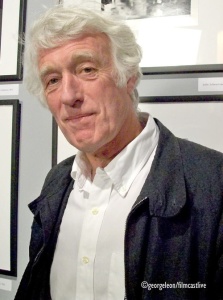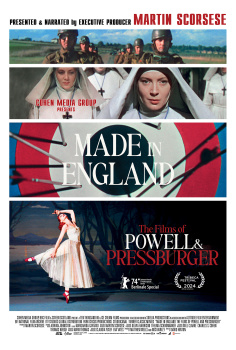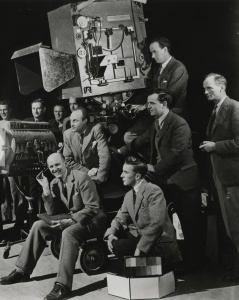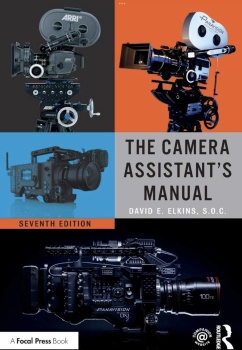
FOR MORE INFO: Watch -ON DEMAND- Motion Control video Tutorial. Main window above. For sales and rentals contact Jason Rau at Camera Control, Santa Monica, CA.

FUJIFILM DUVO HZK 14-100 PORTABLE ZOOM LENS IS A DOUBLE WINNER NABSHOW PRODUCT OF THE YEAR.

The Duvo HZK 14-100mm Portable Zoom Lens from Fujinon is a compact and lightweight, dual-format, PL-mount zoom lens that can cover both Super35 and full-frame sensors.
Boasting a maximum aperture of T2.9, when paired with select cinema-type sensors, this lens covers a widely used 14-100mm range and delivers desirable results with shallow depth-of-field and attractive bokeh. A built-in extender expands the image circle by 1.5x, shifting the focal length to 21-150mm.
The lens design allows its operation to be in line with that of broadcast lenses using zoom and focus demands, and at only 6.5 lb, the Duvo HZK 14-100mm is built for portability.

1. Don’t Get Distracted with Technique
“Operating the wheels needs to become second nature as it can be a disaster if the technique of operating distracts from the relationship that an operator has with the subject. When I was starting I practiced doing figures of eight with the wheels and progressed to signing my name with them.
I don’t feel the need to practice anymore but I do reassure myself that I can still sign my name each time I start a new film, if I am using a gear head. A gear head is not everyone’s choice and I don’t always carry one but it does have distinct advantages on certain set ups and on certain films.”
👉 CLICK IMAGE ABOVE FOR MORE
From Executive Producers Martin Scorsese & Thelma Schoonmaker

🇬🇧 MADE IN ENGLAND: THE FILMS OF POWELL AND PRESSBURGER
Martin Scorsese's personal journey through the films of Powell and Pressburger, the visionary British filmmakers behind classics like The Red Shoes and Black Narcissus, offers a captivating exploration of their genius and enduring influence on cinema.
Directed by David Hinton, Narrated by Martin Scorsese

Click image above to download PDF booklet

The Camera Assistant's Manual. 7th Edition.
ON SALE NOW! CLICK IMAGE ABOVE TO ORDER.
Excel as a Cameraman in today’s evolving film industry with this updated classic. Learn what to do – and what NOT to do – during production and get the job done right the first time.
This seventh edition covers the basics of cinematography and provides you with the multi-skill set needed to maintain and transport a camera, troubleshoot common problems on location, prepare for job interviews, and work with both film and digital technologies.
Illustrations, checklists, and tables accompany each chapter and highlight the daily workflow of an Assistant Cameraman (AC), with expanded sections on problems and troubleshooting, updated formulas, tables, and checklists, as well as new information on the differences between working in the United States and UK and additional information on working with digital technology.
This is a must-have for anyone looking to succeed in this highly technical and ever-changing profession. This book features a comprehensive companion web site that offers plenty of useful resources, including online tutorials that ACs can easily access while on location and supplementary downloadable forms and checklists.

The ICG Safety App update went live on Monday, April 8, 2024.
The updated app features a redesigned user experience, improved Hazard Report workflow, and much more. On April 8, the existing ICG Safety App should have automatically updated to the new version of the app, depending on your phone's settings. If automatic app updates are not turned on, you will need to manually update the app. For more information on updating apps, please refer to either the Apple or Android documents.
Submitting Through the App
Select the orange "Report Hazard or Unsafe Hours" button on the app to report your workplace safety issues. All submissions will be handled confidentially. Members from other Locals are also invited to submit a report (please include your Local in the comments section).
CLICK IMAGE TO DOWNLOAD APP





SkyPanel X—the new all-weather LED luminaire and latest addition to the SkyPanel family. Introduced as a modular system and configurable into different sizes, SkyPanel X now offers native soft, native hard, and open-face lighting.
This state-of-the-art LED light sets new standards in terms of dimming, color rendition, output, and beam quality, making it the perfect lighting solution.






AC MANUAL, 11th EDITION

The revised 11th edition of this essential technical reference is now exclusively available for pre-order from the American Society of Cinematographers.
Containing entirely new chapters and substantial rewrites of entries from the previous edition, this hardback book designed for on-set use is a must-have for cinematographers and other motion-imaging professionals.
Topics covered in this new edition of our “Filmmaker’s Bible” include:


The MYCOLOR app provides easy access to Rosco’s color filters. Use the app to search, filter, sort, compare, and favorite all of Rosco’s color filters on your mobile device.

The app features all Rosco filter ranges:
The free app also features a palette builder for users to create a collection of color filters for their projects or productions.
MYCOLOR is available for iOS and Android devices. Download by clicking image.



